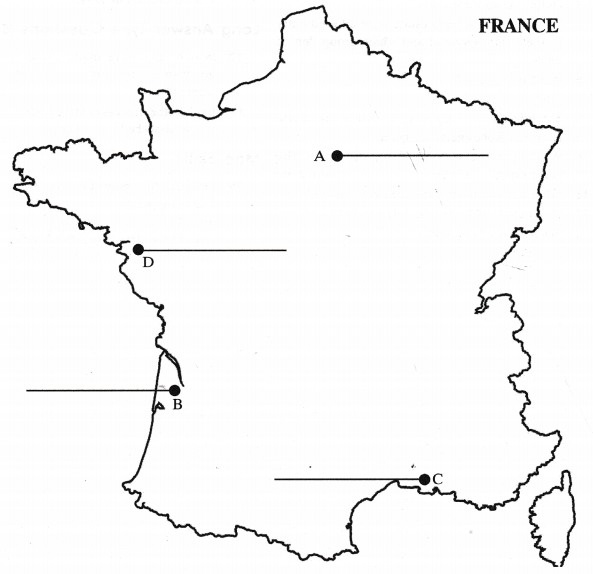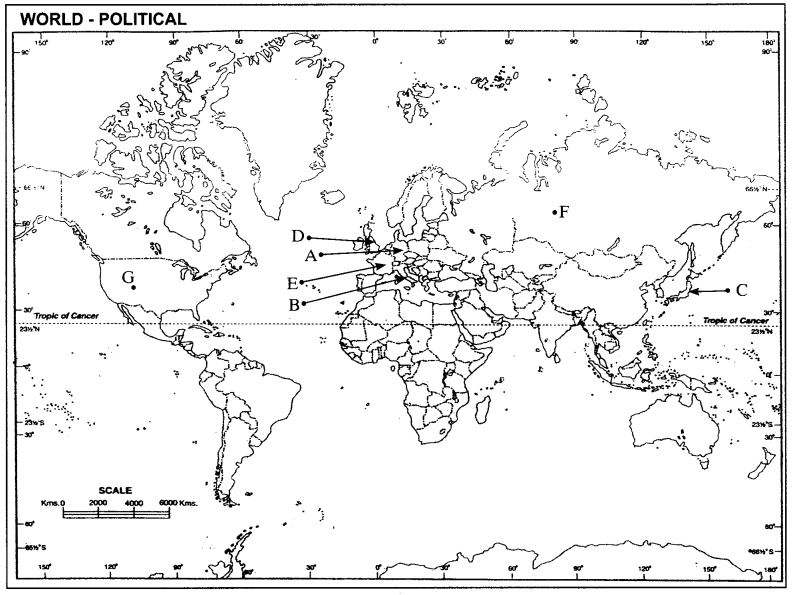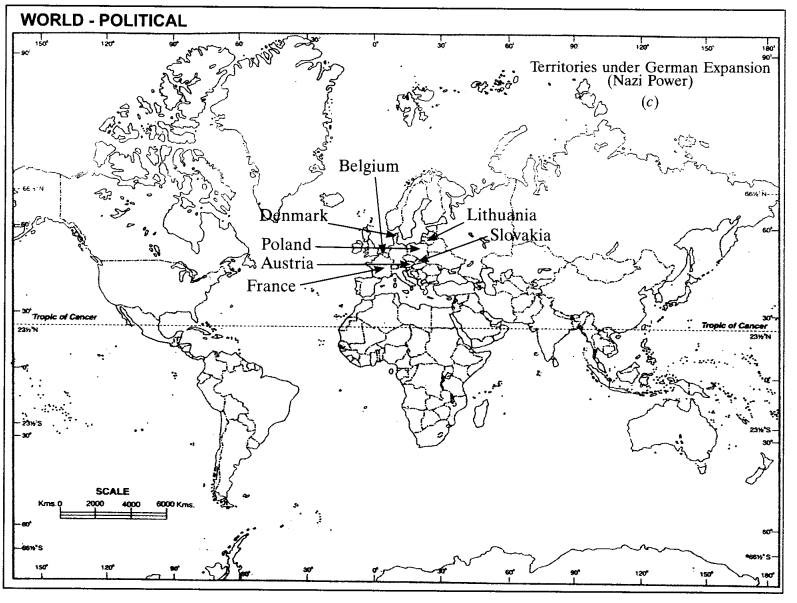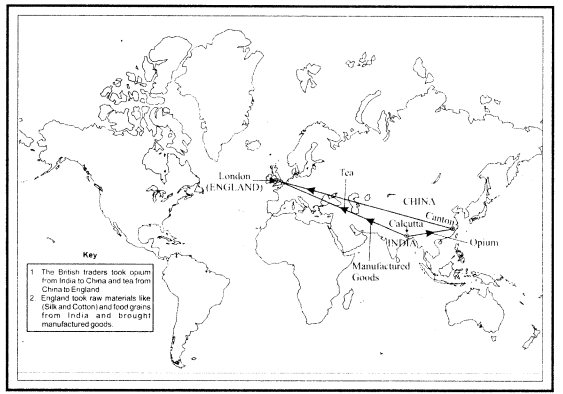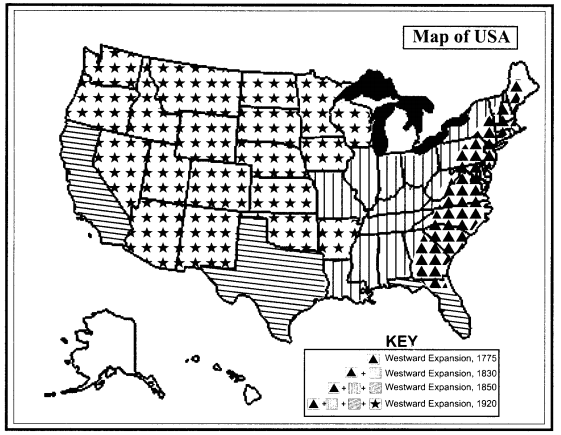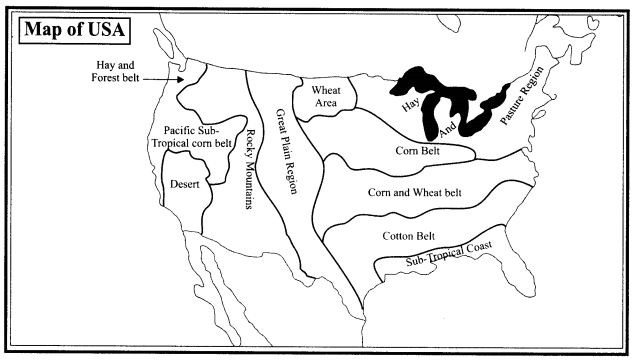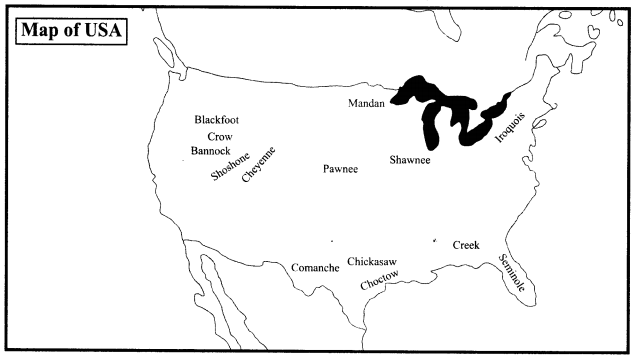CBSE Class 9 Civics Chapter 6 Extra Questions Democratic Rights Pdf free download are part of Extra Questions for Class 9 Social Science. Here we have given NCERT Extra Questions for Class 9 Social Science SST Civics Chapter 6 Democratic Rights.
You can also practice NCERT Solutions for Class 9 Civics Chapter 6 Questions and Answers on LearnInsta.com.
NCERT Class 9 Civics Chapter 6 Extra Questions and Answers Democratic Rights
SOLVED QUESTION BANK
Very Short Answer Type Questions [1 Mark]
Question 1.
What is Guantanamo Bay? What is it known for?
Answer:
Guantanamo Bay is an area near Cuba controlled by the American Navy. It was known as a prison where the Americans kept 600 people without trail on suspicion of taking part in attack on New York on September 11, 2011.
Question 2.
Which organisation reported about human rights violation in Guantanamo Bay?
Answer:
Amnesty International, an International human rights organisation tried to expose the violation of human rights.
Question 3.
Mention one charge of human rights violation made by Amnesty International against the USA.
Answer:
- The prisoners were tortured and denied the treatment that is given to even prisoners of war as per international treaties.
- Prisoners were not released even after they were officially declared non-guilty. (any one)
Question 4.
Mention one fundamental rights which the Saudi Arabia denies to its citizens.
Answer:
- Citizens cannot form any political parties. Media cannot write anything that the king does not like. So freedom of speech and expression is denied.
- There is no freedom of religion. Every citizen has to be a Muslim. Non-Muslim residents can follow their religion in private but not in public. (any one)
Question 5.
How are the rulers of Saudi Arabia elected?
Answer:
The country is ruled by a hereditary King and the people have no role in electing or changing their rulers.
Question 6.
Why did ethnic massacre take place in Kosovo?
Answer:
Kosovo, a province of Yugoslavia, had majority population of Albanians. But Serbs were in majority in the entire country. The government of Milosevic was hostile to the Kosovo Albanians. He ordered the massacre of Albanians who did not leave the country.
Question 7.
How was an ethnic massacre in Kosovo put to end?
Answer:
The intervention of many countries led to Milosevic’s loss of power and he was tried by the International Court of Justice.
Question 8.
What can be done in a democratic country to avoid the examples of Saudi Arabia, Kosovo and Guantanamo Bay?
Answer:
To have a system where minimum freedom is granted to its citizens—powerful or weak, rich or poor, majority or minority and this freedom can be enforced also.
Question 9.
What are rights? [CBSE 2015]
Answer:
Rights are reasonable claims of a person recognised by society and sanctioned by law.
Question 10.
How can we practice our rights?
Answer:
A right is possible when we make a claim that is equally possible for others. We cannot have a right that harms or hurts others.
Question 11.
When do the rights become enforceable?
Answer:
Rights become enforceable when they are recognised by the society and the law.
Question 12.
What happen if rights are not written into laws?
Answer:
The remain only natural or moral rights if not recognised by laws. They can not be enforced and citizens can not approach courts for their application.
Question 13.
Give one reason why rights are necessary in a democracy.
Answer:
Citizens can express their opinion, form political parties and take part in political activities.
Question 14.
Why are some rights placed higher than the government? How?
Answer:
Some rights are placed higher than the government so that it cannot violate them. They are written in constitution and are enforceable.
Question 15.
What are fundamental rights? How many fundamental rights are granted by our constitution?
Answer:
Some rights are given special status as they are essential or fundamental or basic to our life. These rights are called fundamental rights and every citizen is given these rights. Six fundamental rights are granted by our constitution.
Question 16.
Name the six fundamental rights provided by the Indian Constitution to Indian citizens.
Answer:
The fundamental rights are:
- Right to Equality
- Right to Freedom of Religion
- Right to Freedom
- Cultural and Educational Rights
- Right against Exploitation
- Right to Constitutional Remedies
Question 17.
What does ‘rule of law’ mean?
Answer:
It means that no person is above the law and the laws apply to all in the same manner regardless of a person’s position, caste, creed, religion or gender.
Question 18.
Why is the rule of law considered the foundation of any democracy?
Answer:
It means that no person is above the law. There cannot be any distinction between a political leader, government official and an ordinary citizen. The laws apply in the same manner to all.
Question 19.
To which sections of society government of India give reservations?
Answer:
The government of India give reservations to Scheduled Caste, Scheduled Tribes and Other Backward Classes.
Question 20.
What do you mean by equality?
Answer:
Equality means that all citizens are treated equally and there should be no discrimination on basis of caste, colour, creed, gender, and giving everyone an equal opportunity to achieve whatever one is capable of.
Question 21.
What do you mean by untouchability?
Answer:
It is the refusal to touch people belonging to certain castes as well as any belief or social practice which looks down upon people on account of their birth with certain caste labels.
Question 22.
What do job reservation mean?
Answer:
Job reservation means giving special treatment to someone in order to ensure equal opportunity.
Question 23.
What does Right to Freedom mean?
Answer:
It means living without interference by others in one’s affairs. Others should not dictate us what we should do. It means that citizens are free to do everything but do not violates other’s right to freedom.
Question 24.
Name the freedoms allowed to Indian citizens under the Right to Freedom.
Answer:
- Freedom of speech and expression.
- Freedom to assemble in a peaceful manner.
- Freedom to form associations and unions.
- Freedom to move freely throughout the country.
- Freedom to reside in any part of the country.
- Freedom to practice any profession or carry out any occupation, trade or business.
Question 25.
What is meant by freedom of speech and expression?
Answer:
It means that people are free to think differently, express their views accordingly, criticise the government or activities of an association, publicise our views through magazine or newspaper.
Question 26.
How does the government restricted freedom to speech?
Answer:
This freedom can not be used to instigate violence against others. Someone can’t be defamed by false and mean things.
Question 27.
“Workers in a factory can form a worker’s union.” Which right of freedom is represented by the statement?
Answer:
Right to form associations and unions.
Question 28.
How do citizens of India exercise freedom to travel to any part of the country?
Answer:
The citizens of India have single citizenship and are free to reside and settle in any part of the territory of India. This allows lakhs of citizens to migrate villages to towns and poorer regions to more prosperous regions.
Question 29.
Which fundamental right says that no person can be deprived of his life or personal liberty except according to procedure established by law? [CBSE 2015]
Answer:
Right to freedom.
Question 30.
What action is mandatory after arresting or detaining a person?
Answer:
The person shall be produced before nearest magistrate within a period of 24 hours of arrest.
Question 31.
Which three evils have been declared illegal by the constitution?
Answer:
The evils are:
- Traffic in human beings especially women for immoral purposes.
- Forced labour or begar in any form.
- Child labour
Question 32.
What do you mean by ‘traffic in human beings’?
Answer:
Traffic means buying and selling of human being for immoral purposes.
Question 33.
What is Begar?
Answer:
Begar is practice where the worker is forced to render service to the master free of charge or at a nominal remuneration.
Question 34.
What is bonded labour?
Answer:
When the practice of begar takes place on a life-long basis, it is called the practice of bonded labour.
Question 35.
In what way is child labour prohibited by the Indian constitution?
Answer:
The constitution prohibits child labour, i.e., no one can employ a child below the age of fourteen to work in any factory or mine or in any other hazardous work such as railways and ports.
Question 36.
In which industries children prohibited from working?
Answer:
Children were prohibited from working in industries such as beedkmaking, fire crackers and matches, printing and dyeing.
Question 37.
What is a secularism?
Answer:
Secularism means that the state is concerned only with relations among human beings and not with the relation between human beings .and the God. Indian secularism practices an attitude of a principled and equal distance from all religions.
Question 38.
What is meant by a ‘secular state’? [CBSE 2015]
Answer:
It is a state which does not have an official religion. All religions are given equal status and respect.
Question 39.
What does right to freedom of religion mean?
Answer:
It means that every person has the right to choose, practice and propagate any religion he or she believes in. Every religious group is free to manage its religious affairs. –
Question 40.
Why are there no special guarantees for the majority?
Answer:
The reason is that the working of democracy gives power to the majority.
Question 41.
The cultural and educational rights of the minorities need special protection. What is the reason behind it?
Answer:
These rights of the minorities may get neglected or undermined under the impact of the languages, culture and religion of the majority.
Question 42.
What does Right to Constitutional Remedies imply?
Answer:
In case of violation of our rights by fellow citizens, private bodies or by the government, we can approach the courts and seek remedy.
Question 43.
What is writ?
Answer:
It is a formal document containing an order of the court to the government issued only by High Court or the Supreme Court.
Question 44.
What is PIL?
Answer:
The expanded form of PIL is Public Interest Litigation. It a right under which, citizen or group of citizens can approach the Supreme Court or High Court for the protection of public interest against a particular law or action of the government.
Question 45.
In which year the National Human Rights Commission was set up by law?
Answer:
1993.
Question 46.
What is the main focus of NHRC?
Answer:
Helping the victims secure their human rights.
Question 47.
Who appoint the National Human Rights Commission (NHRC)?
Answer:
The President of India appoints the NHRC.
Question 48.
How many states in our country have State Human Right Commission?
Answer:
26 states (as on 10 December 2017).
Question 49.
Mention certain rights derived from the fundamental rights.
Answer:
Freedom of press, right to information and right to education are derived from fundamental rights.
Question 50.
What does the right to education mean?
Answer:
According to this right, children up to the age of 14 years are entitled for free and compulsory education under this law.
Question 51.
What is RTI?
Answer:
Right to Information is the expanded form of RTI. RTI is the right to seek information from government offices regarding public work. This right comes under the fundamental right to freedom of speech and expression.
Question 52.
What are Human Rights?
Answer:
Human Rights are universal moral claims that may or may not have been recognised by law. But there rights give a right to be treated as equal by law. Every human being born anywhere has the right to live and enjoy his life and should not be tortured by any means.
Question 53.
What is the International Covenant on economic, social and cultural rights?
Or
How has the International Covenant contributed to the expansion of rights?
Answer:
It is an international agreement which recognises many rights that are not directly part of the fundamental rights but are considered as a standard of human rights. For example, right to adequate food, clothing and housing.
Question 54.
Mention any one right granted to its people by the constitution of South Africa.
Answer:
- Right to privacy, so that citizens or their homes cannot be searched, their phones cannot be tapped, their communication cannot be opened.
- Right to environment that is not harmful to their health or well being. (any one)
Short Answer Type Questions [3 Marks]
Question 55.
How were prisoners tortured by the US Army in Guantanamo Bay prison?
Answer:
The prisoners were being tortured in the following ways that violated the US laws.
- They were being denied the treatment that even prisoners of war must get as per the institutional treaties.
- Prisoners were not released even after they were officially declared not guilty.
- Prisoners have no trial before any magistrate in the US, nor could these prisoners approach courts in their own country.
Question 56.
Describe the ethnic massacre in Kosovo. [CBSE 2016]
Or
What was the background of the ethnic massacre that took place in Kosovo?
Answer:
- Kosovo was a province of Yugoslavia before it split. In this province, the Serbs were in minority and Albanians were in majority while it was the other way round in the rest of the country.
- A narrow-minded Serb nationalist Milosevic had won the elections. His government was hostile to the Kosovo Albanians.
- He wanted the Serbs to dominate the country. According to many Serbs leaders, ethnic minorities like the Albanians should either leave the country or accept the dominance of the Serbs.
Question 57.
Which three qualities are required for calling any claim a right?
Answer:
The three qualities which are required for calling any claim a right are as follows.
- The claims should be reasonable.
- It has to be recognised by the society
- It has to be sanctioned by the law.
Question 58.
What are rights? Why are they essential in a democracy? Give two reasons. [HOTS]
Answer:
Rights are claims of persons recognised by society and sanctioned by law. Rights are necessary for the very sustainance of a democracy in the following manner.
- Rights protect minorities from the oppression of majority. They ensure that the majority cannot do whatever it likes. Rights are guarantees which can be used when things go wrong, when some citizens may wish to take away the rights of others. This happens when those in majority want to dominate those in minority. In such a situation, the government should protect the citizen’s rights.
- Rights are necessary so that citizens can express their opinion, form political parties and take political activities.
- Sometimes the elected governments may not protect or may’attack the rights of their citizens. That is why some rights need to the placed at higher than the government, so that the government cannot violate them. (any two)
Question 59.
What are the main features of ‘Right to Equality’?
Answer:
The main features of ‘Right to Equality’ are:
- The constitution says that the government shall not deny to any person in India equality before law or the equal protection of the laws. This means that the laws apply in the same manner to all, regardless of a person’s status, i.e., every citizen of India is subjected to the same law e.g. from the Prime Minister to a villager. This is known as the rule of law.
- The government shall not discriminate against any citizen on the grounds of religion, caste, ethnicity, gender or place of birth. Every citizen shall have equal access to public-places like shops, restaurants, hotels and cinema halls etc.
- All citizens get equal opportunity in matters relating to employment or appointment to any position in the government. No citizen shall be discriminated against or made uneligible for employment on these grounds.
Question 60.
The Government of India has provided reservations for Scheduled Castes, Scheduled Tribes and Other Backward Classes. Are these reservations against the right to equality? Explain. [HOTS]
Answer:
- Such reservations are not against the right to equality. Equality does not mean giving everyone the same treatment, no matter what they need. Equality in real sense means giving everyone an equal opportunity to achieve whatever one is capable of.
- Sometimes, it is necessary to give special treatment to someone in order to ensure equal opportunity.
- This is what job reservations do. To clarify this, the constitution says that reservations of this kind are not violation of the right to equality.
Question 61.
Why has constitution made untouchability a punishable offence? [HOTS]
Answer:
Untouchability has been made a punishable offence by the constitution because:
- The constitution mentions untouchability as an extreme form of social discrimination and clearly directs the government to put an end to it.
- It does not only mean refusal to touch a person belonging to certain castes. It is a belief or social practice which looks down upon certain castes on account of their birth with certain caste labels.
- Such a practice denies such people interaction with others or access to public places as equal citizens. So constitution has declared untouchability as a punishable offence.
Question 62
How can citizens exercise their freedom to hold rallies and demonstrations?
Answer:
Citizens have the freedom to hold rallies and demonstrations in our country guaranteed by the constitution. But they can excise the right in following manners.
- Such meetings have to be peaceful.
- They should not lead to public disorder or breach of peace in society.
- Those who participate in these activities should not carry weapons and arms.
- Citizens can also form associations like doctors, traders etc. But these cannot provoke others. (any three)
Question 63.
What legal procedures have to be followed by a police officer if he arrest or detain any citizen?
Answer:
- A person who is arrested and detained will have to be informed the reasons for such arrest and detention.
- A person who is detained and arrested shall be produced before the nearest magistrate within a period of 24 hours of arrest. .
- Such person have the right to enage a lawyer for his/her defence.
Question 64.
Explain the three evils declared illegal under the Right against Exploitation.
Answer:
The constitution mentions three evils and declares them illegal.
- Traffic in human beings. Traffic here means selling and buying of human beings, usually women for immoral purposes.
- Begar. Our constitution also prohibits forced labour or begar in any form. It is a pratice where the worker is forced to render service to the master, free of cost/charge or at nominal salary. When this takes place on life-long basis, it is called bonded labour.
- Child labour. The constitution also prohibits child labour. No one can employ a child below the age of 14 years to work in any factory or mine or in any other hazardous work such as in the railways and at ports. Many laws have been made to prohibits children from working in industries such as beedi making, fire crackers and matchbox, printing and dyeing.
Question 65.
How is the Right to Equality exercised?
Answer:
The Right to Equality exercised in the following manner.
- By prohibiting discrimination against any citizen on the grounds of religion, caste, ethnicity, gender or place of birth.
- Every citizen shall have access to public places likes shops, restaurants, hotels and cinema halls.
- Giving equal opportunity to all citizens.
- Provide reservations for SCs, STs, OBCs, women, poor or physically handicapped in some kinds of jobs to ensure equal opportunity.
Question 66.
Mention any three constitutional provisions that make India a secular state.
Answer:
In India, people follow different religions. So the constitution makers made provisions for India to be a secular country.
The constitutional provisions that make India secular are:
- The constitution provides to all its citizens the freedom to profess, practice and propagate any religion of their choice.
- There is no official religion for India. Unlike Srilanka, where Buddhism is state religion and Pakistan which has Islam as state religion.
- There shall be no religious instruction in the government educational institutions.
Question 67.
Why have new rights been added to fundamental rights from time to time? Give a few examples.
Answer:
New rights been added to fundamental rights because as time moves, societies develop or new
constitution is made. So to accommodate the needs of the present generation the scope of rights has been expanded over the years.
For example:
- Right to education has become a fundamental right for Indian citizens.
- Right to property is not a fundamental right but it is a legal or constitutional right.
- Right to freedom of press is also another right which is an expansion of the right to freedom.
Question 68.
What does the constitution specify about the cultural and educational rights of the minorities?
Answer:
The constitution specifies the cultural and educational rights of the minorities in the following ways:
- Any section of the citizens with a distinct language or culture have a right to conserve it.
- Admission to any educational institution maintained by government or receiving government aid can not be denied to any citizen on the ground of religion or language.
- All minorities have the right to establish and administer educational institutions of their choice.
Question 69.
How does PIL work? Mention the importance of PIL.
Answer:
Under this (PIL), any citizen or group of citizens can approach tfye supreme court or high court for the protection of public interest against a particular law or action of the government.
Public Interest Litigation is use of litigation or legal action, which seeks to advance the cause of minority or disadvantaged groups or individuals. It raises issues of broad public cancern. It is a way of using the law strategically to effect social change.
Question 70.
Mention the powers/functions of the NHRC.
Answer:
The NHRC has the following powers/functions:
- To make independent and credible inquiry into any case of violation of human rights.
- It inquires into any case of abetment of such violation or negligence in controlling it by any government officer and takes other general steps to promote human rights in the country.
- It presents its findings and recommendations to the government or intervene in the. court on behalf of the victims.
- It has wide ranging powers to carry out its inquiry. It can summon witnesses, question any government official, demand any official paper, visit any prison for inspection or send its own team for on-the-spot inquiry.
Long Answer Type Questions [5 Marks]
Question 71.
What type of government does Saudi Arabia have? What are its main features?
Answer:
Saudi Arabia is a monarchy, ruled by a hereditary king and the people have no role in electing or changing their rulers.
The main features of this type of government are:
- The king selects the legislature, the executive and also appoints the judges and can change any of their decisions.
- Citizens cannot form political parties or any political organization.
- Media cannot report anything that the monarch does not like.
- There is no freedom of religion. Every citizen is required to be a muslim. Non-muslim residents can follow their religion in private but not in public.
- Women are subjected to many public restrictions. The testimony of one man is considered equal to that of two women. (any four)
Question 72.
What are fundamental rights? How many fundamental rights are mentioned in our constitution? Why are they important?
Answer:
In India, like in other democracies in the world, some rights are mentioned in the constitution. These rights are fundamental to our life and therefore they are given a special status. They are called fundamental rights.
Six fundamental rights are:
- Right to Equality
- Right to Freedom
- Right to Freedom of Religion
- Right against Exploitation
- Right to Constitutional Remedies
- Cultural and Educational Rights
The fundamental rights are important as:
- Fundamental rights are an important basic feature of the Indian constitution.
- The preamble of the constitution takes about securing for all its citizens equality, liberty and justice. Fundamental rights put these into effect.
- They provide the security to the minorities in the country.
- They keep a check on the government.
Question 73.
Describe any five Freedom granted to the citizens of India under the Right to Freedom. [CBSE 2016]
Or
What is rights to Freedom? Mention different rights that come under it.
Answer:
Everybody wants to live in freedom which means absence of constraints. We want to live in a society but we want to be free and do not want to be dictated by anyone. So the constitution of India has given to its citizens the following rights:
- Right to freedom of speech and expression.
- Right to assemble in a peaceful manner.
- Right to form associations and unions.
- Right to move freely throughout the country.
- Right to reside in any part of the country.
- Right to practice any profession or carry out any occupation, trade or business.
These freedoms are not unlimited licences to do anything we want. The government has/can impose certain restrictions on these freedoms of the citizens under certain conditions for the good of the society.
Question 74.
Explain briefly the Right to Constitutional remedies. How this right could be enforced?
Answer:
- The fundamental rights in the constitution are important because they are enforceable. We have the right to seek the enforcement of their rights. This is called the Right to Constitutional . Remedies. This itself is a fundamental right. This right was rightly called the heart and soul of the constitution by Dr BR Ambedkar. It makes other rights effective.
- Sometimes our rights may be violated by fellow citizens, private bodies or by the government. When any of our rights is violated we can seek remedy through the supreme court or high court of a state.
- The supreme court and high court have the power to issue directions, orders or writs for the enforcement of fundamental rights. They can also award compensation on the victims and punishment to the violators.
Question 75.
What is the role of International Covenant in the expansion of rights?
Answer:
International Covenant has also contributed to the expansion of rights. It binds the signatory countries to provide some rights to the citizens.
International Covenant on economic, social and cultural rights recognises many rights that are not directly a part of the fundamental rights in the India Constitution. This includes:
- Right to work, opportunity to everyone to earn livelihood by working.
- Right to safe and healthy working conditions with fair wages that can provide a decent standard of living for workers and their families.
- Right to adequate standard of living including adequate food, clothing and housing.
- Right to social security and insurance.
- Right to health, medical care during illness, special care for women during childcare and prevention of epidemics.
- Right to education, free and compulsory primary education, equal access to higher education. Thus International covenants play a significant role in expanding the scope of rights, {any five)
Question 76.
Explain how the scope of rights has expanded in recent times. [HOTS]
Answer:
The scope of rights has expanded in the following ways.
- The court judgements have helped in expanding the scope of rights in the following ways.
- Certain rights like right to freedom of press, right to information and right to education are derived from the fundamental rights.
- The government is responsible for providing free and compulsory education to all children up to the age of 14 years.
- The Supreme Court has expanded the meaning of right to life to include the right to food also.
- The Parliament has enacted a law giving the right to information to the citizens. This is under the freedom of thought and expression.
- Constitution provides certain rights which are not fundamental e.g. right to property.
- Right to vote is a constitutional right. .
- Human rights that are universal moral claims also help in expansion of rights.
- International movements also help in expansion of rights.
- International covenants also contribute to expansion of rights.
- Last, but not the least sometimes new rights are guaranteed under the constitution as a result of the struggle of the people e.g. the constitution of South Africa guaranteed its citizens the following rights.
- Right to privacy.
- Right to environment that is not harmful to their health or well being.
- Right to have access to adequate housing.
- Right to access to health care services, sufficient food and water and medical treatment in an emergency. (any five)
Hope given Extra Questions for Class 9 Social Science Civics Chapter 6 are helpful to complete your homework.
If you have any doubts, please comment below. Learn Insta try to provide online tutoring for you.
